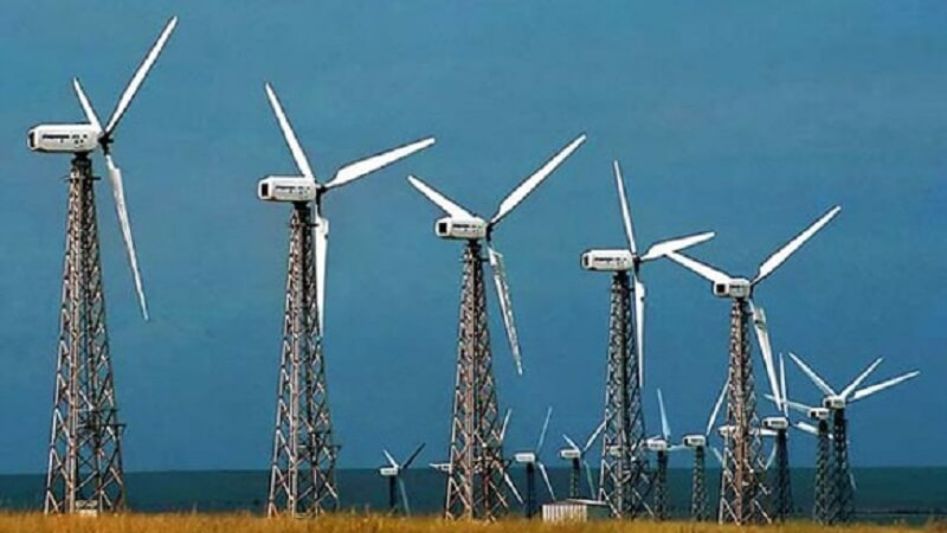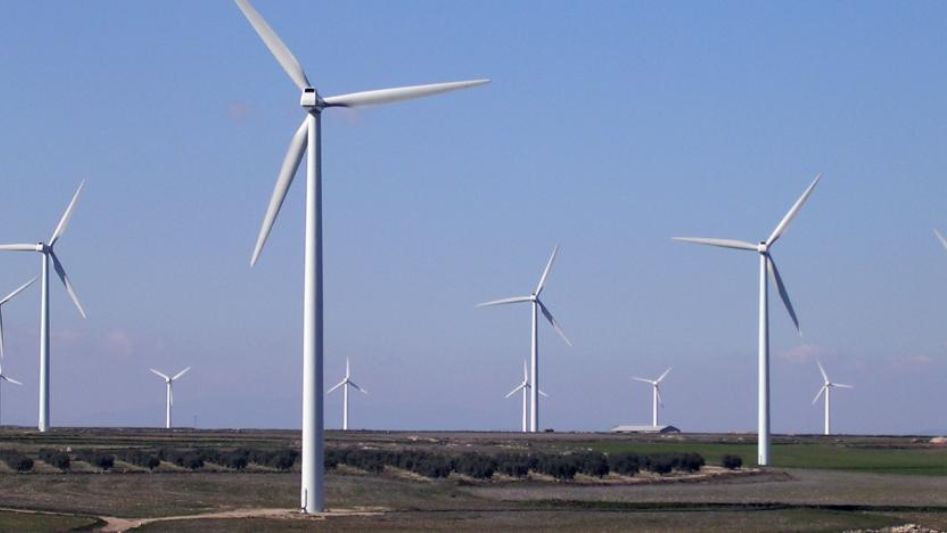Renewable energy investments have grown threefold over the last decade, with investors expecting to see new technologies and even more rapid growth in the next few years.
Table Of Content
Today’s energy producers must not only optimize their investments but also deal with the ever-changing nature of the energy market.
As the world moves toward a low-carbon future, these businesses will have to decide where and how to compete. Where may one find the most promising business prospects, and how much would they be? How crucial is it to look for places where you would be less exposed to climate change and where you would have less of a chance of having assets become stranded?

A lot of companies, especially those in the oil and gas exploration industry, are looking to broaden their horizons and strengthen their financial footing by branching out into other areas of business. They accept the fact that fossil fuels are still vital but that there is a worldwide drive toward renewable energy.
In this issue of POWER, Ahmad Atwan, CEO and creator of VC Fuel in Houston, Texas, shares his thoughts on the current state of the investment market. Atwan’s team offers venture finance for green energy of VC Fuel in Houston, Texas, shares his thoughts on the current state of the investment market. Atwan’s team offers venture finance for green energy. Atwan also serves as the head of Clean Energy Services (CES), which provides cranes, operation, and maintenance services to the wind generation and energy storage industries in Texas. Before joining us, he had positions at Morgan Stanley, BlackRock, and the Boston Consulting Group.
POWER: What factors do you see driving capital growth in renewable energy investments?
Atwan: There are, in my opinion, two primary causes. One is that, because of technological advancements, solar and wind power are among the most cost-effective means of producing electricity. On paper, the transactions seem reasonable, even without taking into account the government subsidies. Once the primary factor pushing the industry, tax credits have given way to the reality that renewables are often the most cost-effective alternative, with the incentives just increasing the attractiveness of these investments. Regardless of where you stand on the oil and gas vs. renewables debate, it is becoming more clear that this is a genuine, permanent phenomenon.
Appetite among investors is a second consideration. Pension funds, university endowments, and international players like sovereign wealth funds made up the bulk of our investors while I worked at Morgan Stanley and BlackRock. The shift began slowly in 2015–2016, when I began actively donating and meeting with them, and then accelerated rapidly afterwards. From 2017 to 2019, we heard from a number of our investors that they needed to diversify their holdings away from oil and gas and towards renewable energy. Not all of our investors felt that way, but a sizable majority did.
POWER: Will renewables replace fossil fuels as a baseload source of electricity generation?
Atwan: In my opinion, the most exciting thing about the renewables business is that we can see a route to having renewables be a baseload power source over the next few years because of technology advancements in solar, wind, and notably battery storage. Ultimately, it proves to be a major turning point.
Now that renewables are so cheap, the main argument against them is that they aren’t always available to provide power. Both the wind and the sun might be absent at times. Therefore, if we accomplish anything for the good of society, we need a backup supply of electricity. Once supplied by coal, this backup is now more often supplied by natural gas. Even yet, I anticipate that natural gas will be in demand for a long time to come. Batteries are the missing piece that closes the gap in renewable energy and makes it possible to use them around the clock. Our new company, Clean Energy Services, provides O&M services for energy storage and wind energy projects, so we spend a lot of time thinking about and investing in these kinds of systems.
POWER: How did the Inflation Reduction Act change the situation?
Atwan: The only renewable industry that did not get tax credits prior to the creation of the IRA’s standalone battery storage tax credit In addition, it established domestic content rules, which mandate that many of these batteries be produced in the USA. Therefore, even if a Korean company is interested in producing batteries, it is in their best interest to do so using local materials.

Because of these favorable conditions, as well as ongoing technological advancements and significant investment in R&D, our batteries’ length and durability are gradually increasing.In the next five to six years, we can see a future where renewables provide the majority of our electricity needs.
POWER: What issues are limiting the sector’s growth?
Atwan: In my opinion, the electrical grid is the most vulnerable system and the one that has received the least attention thus far. In the next two to four years, when additional renewable energy, generating mixes, and standalone storage are all brought online, we will put this theory to the test. More money needs to be put into it. I have my doubts about excessive government expenditure. Comparatively, the IRA was over $500 billion, and the infrastructure bill was about $2 trillion. Not enough money ($2.5 trillion wasn’t enough) was put into modernizing our transmission infrastructure.
A small number of firms would never be able to do it. It’s true that some businesses are attempting to construct their very own high-voltage transmission lines in order to transport Midwest wind to more distant markets like Chicago or even the East and West coasts. The job they are doing is for the Lord. However, getting all the necessary permits and spending the necessary time on them is too expensive for most people. It affects the whole country.
Perhaps in the future there will be a law with transmission as a central feature, but I fear that we will have to experience the consequences of our ignorance ourselves. Unforeseen problems like winter storm Uri in Texas in 2021 or the summer power shortages in California this year will continue to occur, and ultimately, we will be forced to face the facts. The magnitude of the issue is often overlooked until after a catastrophe has occurred, as is the case in many sectors of our society and economy.
The second difficulty is training enough people to run the many new renewable power plants that are being built. What strategies work best for encouraging team members to see themselves as long-term participants in achieving the team’s goals? Wind technicians (I estimate more than 100% yearly growth) and solar installers (around 100% growth) are the two fastest-growing occupations in the United States right now. Expectations are high that this trend will continue for the foreseeable future, tripling annually.
POWER: What can companies do to solve the labor shortage issue?
Atwan: Clean Energy Services (CES) is doing something quite innovative by supporting Houston Community College’s wind technician program. Each year, they train one hundred wind technicians, and when we’ve supported them, we’ll send them out into the field. To sustain their present rate of growth, renewables will need to invest heavily in these sorts of workforce development initiatives. With our veteran retraining programs, we’re helping our service members find high-paying work in fields that are hungry for new expertise.
POWER: Other than reductions in greenhouse gas emissions, what benefits will we see from developing renewable energy technologies?
Atwan: Long term, we Americans stand to benefit greatly from investing in renewable energy.If you have a robust green hydrogen industry that helps power utility plants, forklifts, and many other applications, as well as other integrated renewables sectors that power key industries and power cities that combine wind and solar with batteries, then you have built a moat around your energy industry, making it resilient in the ultimate sense that you are not reliant on anyone else around the world. You have to depend solely on your own in-country skillset, production facilities, and resources.
For instance, to guarantee the reliability of the grid, we are implementing systems at CES to monitor data on renewable production and energy storage in real time. All citizens of the United States benefit from these innovations since they provide affordable and consistent electricity for the foreseeable future. Our corporations are so focused on this problem because the United States is in a better position to succeed than any other nation.
There will always be a thriving oil and gas business in our lifetimes if people stop seeing it as a “we vs. them” struggle between fossil fuels and renewable energy and start viewing it as a necessary step toward achieving energy independence and the creation of many new jobs. I believe that strengthening the reliability of our energy infrastructure is a cause that can unite the whole country of the United States of America.
Conclusion
After discussing the merits and drawbacks of various estimating techniques, it is clear that more work needs to be done in order to increase the precision of estimates for the cost of capital in real estate. Future research needs to fill a number of important gaps in its empirical coverage. Examples of countries with little available data include the United States, France, and Italy, all of which have significant real estate markets.

FAQ
Which two are frequent reasons why some organizations choose green loans over green bonds?
Potential issuers in developing countries with modest green portfolios may choose to borrow money from a green lender rather than incur the additional transaction costs associated with issuing a green bond. This is because only bonds exceeding a specific size are monitored by different indexes.
Why is the use of renewable energy related to green business?
Electricity generated from renewable sources has a lower carbon footprint. Producing power from renewable energy sources allows us to avoid emitting carbon dioxide, the main greenhouse gas responsible for global warming.
What is the biggest issue with renewable energy?
One of the key issues with renewable energy generation has been the much higher variability of supply compared to traditional sources of energy generation. There is less reliability in production because of variations in sunshine and wind compared to fossil fuel facilities.
You May Also Like
- IS SOLAR ENERGY RENEWABLE OR NONRENEWABLE?
- HOW RENEWABLE IS SOLAR ENERGY? THE UNBELIEVABLE FACTS
- TOP 3 USES OF ENERGY IN OUR DAILY LIVES
- WHY HYDROGEN IS THE FUTURE OF SUSTAINABLE ENERGY
- HOW MUCH SOLAR ENERGY COST? TRENDS OVER TIME
External Links
- Green finance, renewable energy investment, and environmental protection: empirical evidence from B.R.I.C.S. countries
- The cost of capital in clean energy transitions
- Renewables are the key to green, secure, affordable energy
- How climate risk is driving institutional investment in renewables
- Estimating the cost of capital for renewable energy projects
